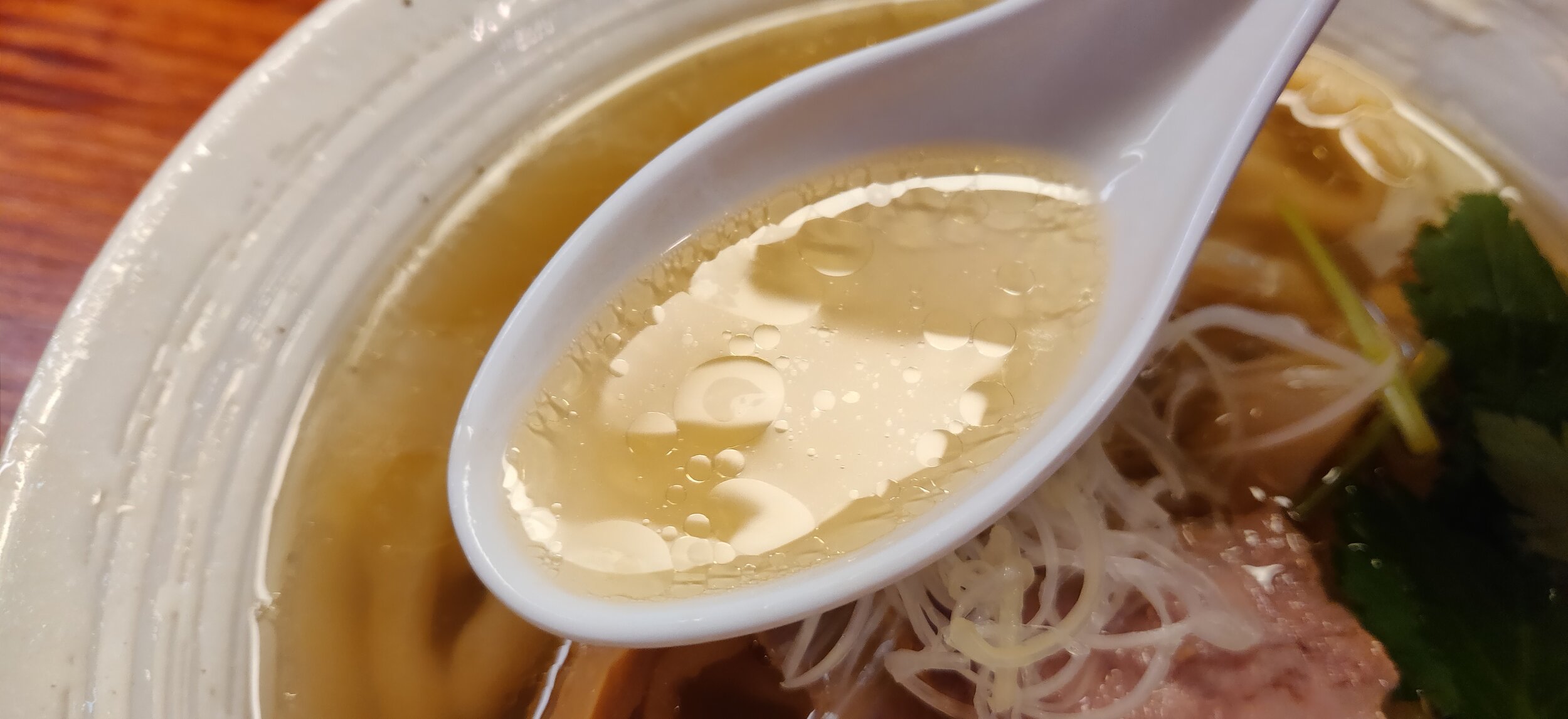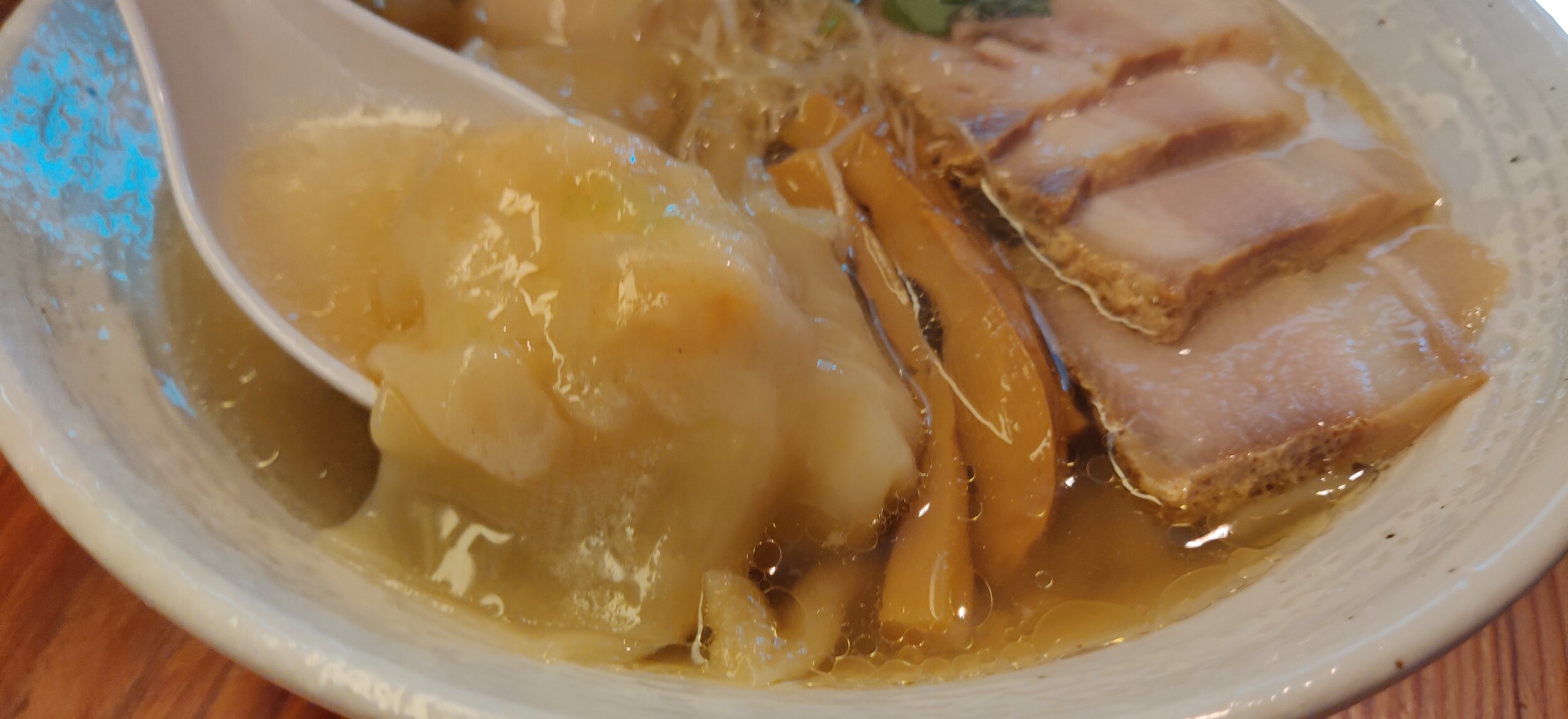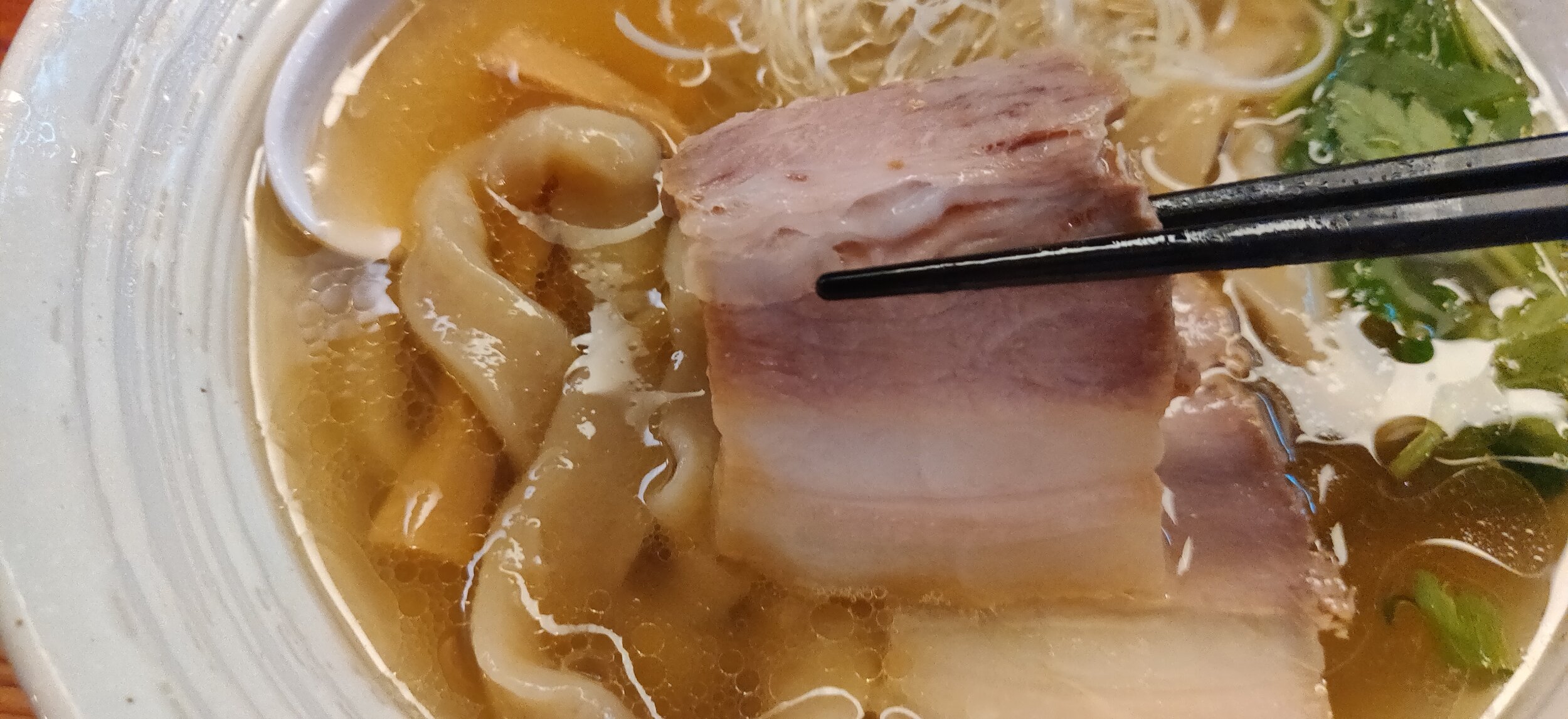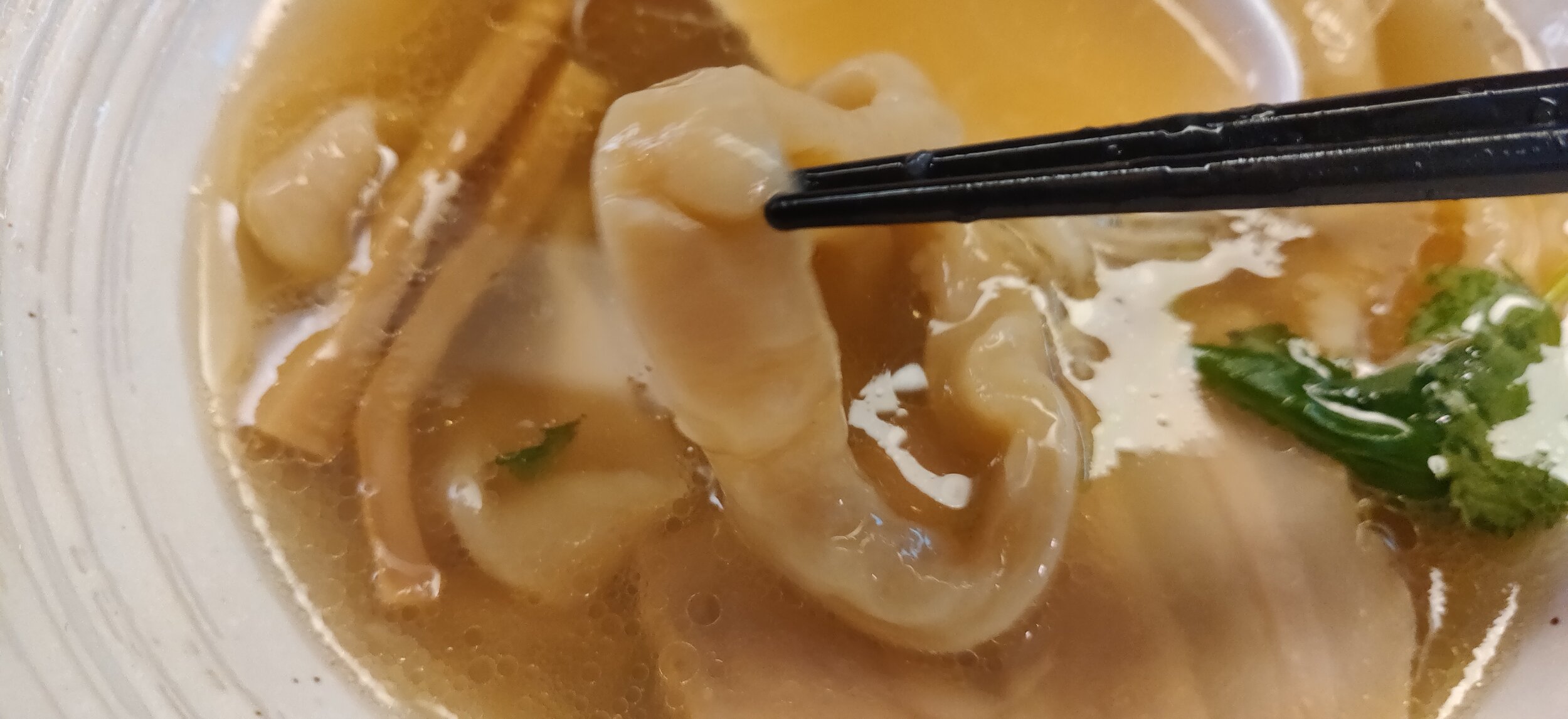Junteuchi Mento Mirai (純手打ち 麺と未来); Newly Added Michelin Guide Ramen, Shimokitazawa, Tokyo
So after the new Michelin Guide was released, I realized I actually went to a couple of the new additions to the Bib Gourmand list so figured I’d write a review for it in case someone was looking for what the restaurant is like. To be honest this wasn’t my favorite ramen restaurant to date and I’m a bit perplexed as to why it even made the list to begin with, but the Michelin Guide confuses me every year so I’ll just give my honest review of the shop. Jyuteuchi Mento Mirai is located a short walk north of Shimokitazawa station on either the Inokashira Line or the Odakyu Line. They pretty quickly jumped up in a ton of ramen rankings from ramendb to being featured on the TRY magazine newcomer and now on the Michelin Bib Gourmand list. The main selling point here is their handmade noodles and that’s what has garnered the most attention for their store. A ton of popular ramen shops have been outsourcing their noodles as it takes way too much time and effort to do it in house so places like this who make their noodles tend to garner a ton of attention. Jyunteuchi literally mean handmade and the chef here actually adjusts his noodles daily to pair with how the soup came out for the day so small attention to details like this has really upped its popularity.
The menus here is quite simple, but they don’t have a ticket machine nor do they have an English menu so I’ll translate it for you here. Starting from the right and moving on to the left is the Shio Ramen, Shio Ramen with marinated soft boiled egg, Shio Ramen with shrimp wontons, and a Tokusei Shio Ramen with soft boiled egg, shrimp wontons, and extra pork char siu. For an extra 150 yen you can get extra noodles to any of you Shio Ramen options. On the farther left is a bowl of rice, a Japanese rice porridge (for leftover soup, charbroiled pork char siu on the side, and a can of beer. Menu is quite simple so really your choices come down to which topping options you choose of the Shio Ramen. They do have specials of Shoyu Ramen (limited to the first 50 guests) on Mondays during lunch and Tsukemen on Tuesdays. However, it is primarily a Shio ramen specialty shop so I’d go for the Shio if its your first timing dining here. It is what their most famous for and what they received their recognition from. I went for their regular Shio Ramen just to see what the hype was about, but ordered their Japanese porridge set for post ramen. Pretty reasonable pricing so I figured I’d give it a try to get a complete experience here.
Starting with the soup, broth here is pretty fantastic. Really, no complaints in the soup department. The broth consists of a variety of ingredients from Japanese chicken wings, dried bonito flakes, Japanese anchovy, kelp, and clams to produce a very light and airy soup. A thin layer of chicken oils rendered from chicken skin float above the surface of the soup which traps in the heat of the broth which is mixed with the chef’s amazing Shio tare seasoning sauce. I think the closest store I can compare the soup flavor to is the famous Motenashi Kuroki over near Akihabara station. The soup was the perfect combination of savoriness from the chicken, umami from the kelp, and depth from the bonito flakes and anchovy. You can really taste every ingredient of the broth and despite the soup being quite light and airy, it has a very impactful flavor. The shio seasoning tare does exactly what you’d want from such a delicate broth, really accentuating the flavors while adding the hint of saltiness that prevents you from putting your spoon down. Very subtly, chicken oils coat your mouth with every spoonful of soup, but even then, not so much that it makes you feel overwhelmed. Subtle hints of yuzu, or a citrus of some sort, helps cut through any residual oiliness you might feel, but I didn’t think it really needed it. My favorite part of the soup however was actually the combination of the soup with the Mitsuba, Japanese herb as it gave it a bit of mid meal flavor change adding some crisp, greenery notes to the soup.
The shrimp won tons was good, but I think it could use some work. You can tell its homemade by the, quite honestly, shoddy wrapping of the filling, but it did give it a nice kind of nostalgic touch to the otherwise meticulous bowl. Pork char siu was made of pork belly which I think was a good choice as the soup does still lack a bit of fattiness to it and it adds a subtle flavor as its not overly seasoned. The ratio of fat to protein was quite good and its combination with the finely shredded white parts of the green onions gave it a ying and yang of burliness of the pork and refreshing crisp of the green onions. Menma bamboo shoots are definitely homemade and the chef decided on the chunk blocks rather than a stringy option. I think this was to give it more texture to contrast the noodles, which were, well, interesting.
My only complaint about this bowl, and this could be purely subjective, is the incredibly thick and chewy noodles of the ramen. My favorite who joined me for the bowl actually enjoyed it, but to me it was way too dense and slimy for my liking. Due to the thickness of the noodles, they need to be cooked quite long which then leads to the surface of the noodles kind of melting from the rest of the noodles. The texture of the slimy surface, to the soft outer and al dente center really threw me off and I didn’t quite agree with the choice with this soup. I more expected a thinner noodle which wouldn’t overpower the rest of the dish as much since the soup really is incredibly well made, but this lingering flour flavor and texture of the noodles left a sour taste in my mouth. Many ramen aficionados do like this handmade quality to it, so again, this could just be purely subjective, but I was not a fan.
I was however a huge fan of the Japanese porridge, or ochazuke, they sell as a side menu for you to enjoy with the soup after you’re done with your meal. The seafood base of the broth goes perfectly with the salted, cured shirasu white bait and the saltiness of the Shio tare makes the fluffy white rice so comforting to shovel down your mouth. The ooba, which is the green leaf you see, adds a bit of a minty freshness while the pickled plums give it a sour kick that cleanses your palette post meal. This was definitely a rice bowl I can get behind and really recommend getting to finish off your meal.
All in all, I’m still pretty confused with Mento Mirai’s addition to the Michelin Guide. Don’t get me wrong, its a fine ramen and definitely in the upper echelon of ramen shops in Tokyo, but I don’t even think its close to a top 20-25 restaurant. I thought maybe it was the decor, but honestly its a pretty normal, typical shop. No fancy. modern interiors and has an old school izakaya vibe to it. Service was fine, but nothing spectacular and again, the noodles really didn’t do it for me. So yeah, would I recommend going to Mento Mirai? Yes, its a very respectable ramen and has some really incredible components to it that separate them from other shops. Would I go again? Most likely not unless I’m in the area, which for me is a clear indication that it’s not quite a top ramen restaurant in my opinion. But again, I’ll leave the judgment up to you. If you enjoyed it, or you agreed with me and thought it wasn’t the best, let me know if the comment section below or through any of my social media accounts. I look forward to hearing about what everyone thought.








